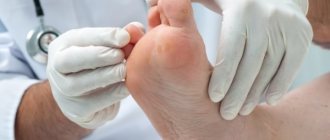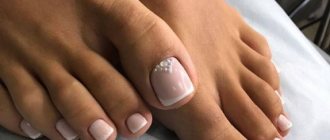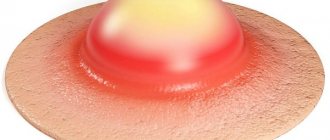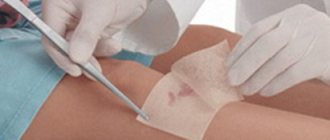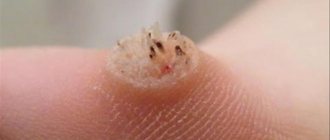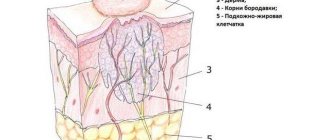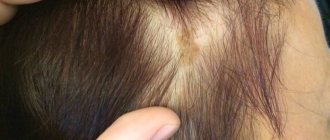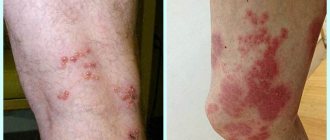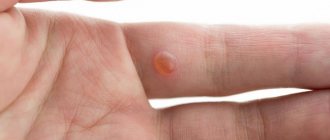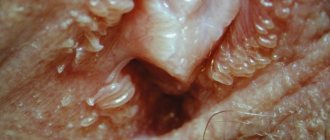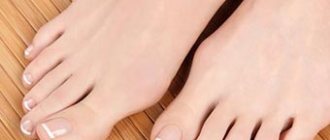What kind of abscess is there?
If there is an abscess on the finger that causes swelling, the nail fold becomes inflamed with pus, then this is paronychia. In situations where such a condition spreads further, they talk about felon.
Paronychia has the following characteristic manifestations in the first stages:
- Redness.
- Swelling of the skin near the nail.
- Pain.
- Intercellular fluid appears, in which there are microbes. The more this fluid accumulates, the larger the bubble becomes, its contents are converted into pus.
Paronychia occurs in the following forms according to duration:
- Acute – this option occurs suddenly. The condition is characterized by severe pain and ulcers. The development is provoked by a bacterial infection, most often staphylococcus. It penetrates under the skin as a result of damage to the cuticle.
- Chronic. She reveals herself gradually. First of all, redness appears near the nail, then swelling appears on the finger, and the affected area is characterized by pain.
There is also a division according to the depth of damage to the finger disease: superficial and deep, which affects the thickness of the nail fold at its base. In superficial terms, the accumulation of pus occurs under the skin, near the edge of the cushion.
Panaritium is the result of improper treatment of paronychia. This disease is divided into the following types:
- Cutaneous. Appears on the back of the finger. In such a situation, pus will accumulate under the skin, as a result of which a bubble appears, inside of which there is a cloudy liquid containing an admixture of blood. Redness will be noticeable on the skin, the pain is not very pronounced, but it is present, and a burning sensation is felt. If the abscess increases, this indicates that it has spread to deeper structures, which means that the disease is developing.
- Periungual has developmental stages similar to paronychia.
- Subungual – inflammation occurs under the tissues of the nail. If penetration occurs under the nail, this indicates the development of pathology. The reasons for the appearance of this condition are a splinter under the nail, an injection.
- Subcutaneous. Located on the palmar area of the surface of the fingers. Inflammation begins under the epidermis, since the pus that forms there is not able to break through the skin and thereby come out; inflammation “acts” differently - it goes deeper. The result is damage to soft tissues and bones.
- Bone appears when there is bone damage, such as an open fracture or infection. A similar condition occurs with the development of subcutaneous pansarium.
- Articular, it is also called purulent arthritis. It develops if the infection penetrates into the joint, if the subcutaneous pansarium was not treated correctly, or there was no treatment at all. This type is characterized by a sharp restriction of joint mobility; there will be severe pain when trying to move the affected finger.
- Tendon , also known as tendovaginitis. This disease is considered severe, it leads to limited functionality of the hand. Symptoms: swelling, the finger is permanently bent, its movements are limited. This manifestation is characterized by severe limitation of movements.
Abscess on a child's finger
Panaritium is quite common in children of all ages. Causes:
- wounds;
- cuts;
- splinters;
- failure to comply with hygiene rules.
With weakened immunity and lack of treatment, the infection quickly spreads deep into the tissues. Listen to your child’s complaints of pain and take action immediately.
How to proceed:
- prepare a bath with herbal decoction. Brew chamomile, calendula, St. John's wort. Let the child hold the sore finger in the healing liquid for 20 minutes;
- a bath with potassium permanganate is effective;
- wipe dry, treat the affected area with brilliant green;
- after a few hours, check whether the inflammation has subsided;
- Is the tumor not shrinking? Apply a compress with Vishnevsky ointment. The smell is unpleasant, but the composition is active, quickly heals the wound, destroys pathogenic bacteria, accelerates the maturation of the abscess;
- the next morning, check the condition of the sore spot. There are no visible improvements, the tissues swell further, is there severe pain? Immediately go for a consultation with a surgeon;
- the doctor will tell you how to act in your case.
Important! Do not self-medicate.
In the first day you can cope with a mild form of the disease. If there are no visible results, you cannot do without the help of a doctor.
Most abscesses appear due to insufficient attention to minor damage to the skin. Follow simple rules - and you will prevent a tiny wound from turning into a panaritium.
Recommendations:
- promptly treat scratches, cuts, and splinter removal sites with disinfectant solutions. Effective: alcohol, hydrogen peroxide, iodine, brilliant green;
- Have you injured your finger or toe while hiking? Attach a clean leaf of plantain or coltsfoot;
- during a country trip, the mini-first aid kit should always contain antiseptics, Vishnevsky ointment or Levomikol, local antibiotics, bandage, cotton wool;
- wash your hands thoroughly, do not allow dirt to get into scratches or wounds;
- trim your nails carefully, leaving sufficient length of the nail plate to protect delicate skin;
- If you get pricked with bones while cutting fish, immediately steam your finger in a solution of potassium permanganate or chamomile infusion. Lubricate the injection site with green paint;
- remove the splinter in compliance with antiseptic rules, treat the sore spot with alcohol before and after the procedure. Couldn't get the splinter out on your own? Be sure to go to a surgeon. The deeper the splinter goes, the more inflammation can develop.
An abscess on a finger or toe is a serious nuisance. Now you know preventive measures and effective methods of combating felon. Be healthy!
From the following video you can learn some more useful tips for treating an abscess on your finger:
Every person's hands are exposed to a huge amount of trauma and damage every day. If the skin of the palms is denser and not too vulnerable, then around the fingers it is thin and susceptible to microbial attacks. That is why the question of how to treat an abscess on the finger near the nail is relevant. The treatment process largely depends on the location of the boil and associated pathologies.
Why does my finger break out near the nails on my hands and feet?
Before you understand the problem, what to do if your finger breaks near the nail, it is worth understanding the causes of this painful and dangerous condition.
Manicure and pedicure
The first and main one is sloppy manicure and pedicure (such abscess can also occur on the toes). Careless or incompetent actions lead to damage to the cuticle - and this opens the way for infections, in particular staphylococcus. It lives on the skin of almost every person. In addition, the following factors help the infection develop:
- Decreased immunity.
- Severe blood diseases.
- Violation of metabolic processes.
- Fungus on the feet or nails (hands/toes).
Most often, an abscess occurs after a skin injury, that is, an opening of the gate to infection. It is worth paying attention to even minor abrasions, scratches, splinters, even cracks due to dry skin - they can become provocateurs. In order to avoid this, the slightest damage must be treated with alcohol-containing substances and iodine.
Hangnails
Another reason is hangnails. This is the opening of a wound on the skin near the nail, which occurs due to vitamin deficiency. There are categories of people who are more susceptible to hangnails:
- People doing manicures with tools that were not previously disinfected.
- Those who pull out hangnails.
- People biting their nails.
- Those who neglect hand washing.
Splinter
It is also a common cause of abscess if it gets into the area under the nail. Small splinters are difficult to notice right away here, so they “live” unhindered under the nail, which provokes the development of inflammation. When a splinter is noticed, it must be removed and the area where it is removed should be treated with peroxide. The pain should go away quickly.
Ingrown nail
It also provokes inflammation and suppuration. Most often, this problem appears on the leg. It is mainly the thumb that suffers, and this does not happen to all people, but to those who have a special structure, location, and growth of the nail. If a pedicure is done incorrectly for such a nail, ingrown nails are almost guaranteed, which means inflammation, suppuration, etc.
When nail growth is impeded by the periungual ridge, it grows into the soft tissue. In order to avoid unpleasant sensations you need to:
- Don't neglect your toenails - trim them in time.
- Do not make them square - file off the corners or trim them.
- In order for the skin to soften, it is necessary to take baths regularly.
- Remove dead parts of the epidermis in areas of possible ingrowth in a timely manner, especially for those people who are predisposed to ingrowth.
It is also worth knowing the signs of an abscess from an ingrown toenail, including:
- Pain on the periungual fold near the edge of the nail, then it moves to the phalanges. Since the intensity is not great, a person often does not pay attention to such sensations.
- Next, inflammation of the skin occurs.
- Suppuration, if measures are not taken at the previous stage.
Provoking factors
The inflammatory process that causes a boil to appear on the hand begins when bacteria and microbes enter the skin.
This can be facilitated by:
- wounds or damage to the skin, even the most minor and invisible,
- tight clothing that rubs and causes irritation,
- skin interaction with chemicals,
- diabetes,
- lack or insufficient effectiveness of hygiene procedures,
- weak immunity,
- lack of vitamins and poor nutrition,
- staphylococcus,
- sudden climate change,
- nervous tension, stress and neuroses.
Even excessive sweating, activities associated with dust, as well as otitis and rhinitis can contribute to the appearance of a boil, since these factors contribute to the proliferation of bacteria.
How to recognize an abscess?
On the upper extremities, any finger can be affected; on the lower extremities, mainly the thumb. If paronychia or panacaria develops on several fingers at once, it can indicate a decrease in immunity and the development of a fungal infection. The symptoms are the same regardless of where the lesion develops and what its cause is, among the signs:
- Redness of the skin on the affected finger.
- Formation of pus.
- Burning sensation.
- There will be pain, not severe at first, and then it will increase and turn into throbbing pain.
- The OTK will grow, an increase in phalanges is observed.
- General malaise will occur: headache, fever, weakness.
- The finger will be constrained in its movements.
If such symptoms are detected, you just need to go to the doctor so that there are no complex consequences.
Characteristic symptoms
An abscess on the finger is accompanied by such symptoms as:
- Redness of the affected skin area;
- Painful sensations;
- Difficulty in finger movement;
- Increase in local temperature.
Attention! The appearance of such a sign as suppuration is a reason to immediately consult a doctor, since this phenomenon can provoke serious problems, for example, peeling of the nail plate, the spread of inflammation to nearby tissues.
Possible complications
You can’t let an abscess start, because the consequences can be very serious. A particular difficulty is that the infection can reach deep into the bones and tendons and affect them. As a result, functionality is limited or completely lost. In the most difficult cases, the hand and forearm are affected.
If there are concomitant diseases (diabetes, for example), then the complications will be even more complex, including:
- Blood poisoning (sepsis). If the patient is not helped in a timely manner, the outcome can be fatal.
- Flagmonitis of the hand is a purulent lesion of the bone tissue of the hand.
- Tenosynovitis is a purulent-inflammatory process in the tendons. In this case, there will be a decrease in the functionality of the finger for a long period of time.
- Osteomyelitis is a lesion of bone tissue by pus, which requires urgent surgical intervention. Sometimes even amputation will be required.
First steps in case of an abscess
In order to prevent the situation from escalating. It is necessary to know the first aid technique for the formation of abscesses.
The first thing you need to do is find out what is prohibited to do in this case. You cannot puncture a purulent bladder. It won't be possible to get rid of it, but it will aggravate the situation. If you insert a needle that pierces a purulent bladder very deeply, you can cause blood poisoning, which will lead to the spread of infection throughout the body.
You can do:
- A warm bath with ingredients that have an anti-inflammatory effect. Among them: salt, laundry soap, chamomile decoction.
- Legs/arms should be steamed 2-3 times a day - this will help significantly reduce the severity of symptoms.
- After the procedure, the affected area should be carefully blotted.
- Another measure of help is a compress. It can be made with onions or aloe leaves.
If after 3 days there is no improvement in the condition or there is even a deterioration, this may indicate a worsening of the situation - the inflammation has gone further. Without the intervention of a doctor, this problem cannot be solved.
Treatment method
Traditional treatment for abscesses does not provide adequate effectiveness, so it is better to use traditional drugs. But you should not self-medicate; you can take the following remedies only after consulting a doctor. Effective medicines:
- "Dimexide". It is prescribed in cases where baths cannot be used for a number of reasons. It has antiseptic properties and penetrates well through the skin. Used when necessary to bandage purulent lesions. A gauze bandage is moistened with the drug solution and applied to the affected area. It can cause adverse reactions; if they are detected, the drug is discontinued.
- If the lesion is moderately complex, antibiotics are prescribed.
- If there is an accumulation of purulent fluid near the nail, it is removed surgically, with preliminary anesthesia.
- If the abscess is the result of a chronic fungal infection, then local drugs are prescribed, for example: Clotrimazole, Ketanazole.
Depending on the stage of development of the disease, treatment can last from a couple of days to several months. If the abscess does not go away for a long time, additional diagnostic methods may be prescribed to exclude neoplasms.
In what cases can you not do without antibiotics?
Antibiotics are powerful drugs and their use should be strictly necessary. In a situation with abscesses, these are the following cases:
- If suppuration is caused by staphylococci or streptococci, antibiotics are always prescribed.
- Subcutaneous pansarium requires such treatment only if the process develops in depth, but there is no purulent tissue damage. In this case, penicillin or cephalosporin groups are used.
- If intra-articular panacaria occurs, then injections with antibiotics that have a wide spectrum of action are used. If there is no desired effect, then the only possible help is surgery, during which antibiotics can also be used.
- With phlegmon of the finger, hand. In a situation where inflammation and/or infection is detected after surgery. Sometimes it is necessary to use drugs to prevent damage to neighboring tissues. The concentration of substances in this case is quite high.
Among the common means:
- Ampicillin.
- Cloesacillin.
- Oxacillin.
- Erythromycin.
- Methicillin.
- Chloramphenicol.
The dosage of drugs is prescribed based on the patient's condition.
It is worth noting
It is better to treat paronychia and felon in infants at home using safe folk remedies, because antibacterial ointments can cause diathesis and other allergic reactions.
However, you can use Vishnevsky ointment, which has no side effects or contraindications. It should be applied to a bandage and applied to the wound for several hours. This procedure should be repeated every other day until the abscess is completely healed. Recovery usually occurs quickly.
You can choose another method that is safe for the baby’s health, for example, using kombucha compresses, which quickly draw out pus and promote wound healing. However, it is better to discuss any of the above treatment methods with your doctor in advance.
Operation
In cases where conservative therapy does not produce results, complications may arise that can only be eliminated surgically. In this case, purulent fluid is pumped out under local anesthesia. If the abscess is white or yellow, then anesthesia is not performed, because this indicates damage to the nerve fibers.
Types of operations:
- If the paronychia is superficial, cutting is carried out without anesthesia, with further removal of pus. Afterwards, a bandage with an antiseptic is applied for 5 days. This is done to epithelize the wound.
- Deep paronychia, localized at the edge of the nail. In this situation, the skin that covers the base of the nail is not cut, but simply moves. In case of nail separation due to pus, it is excised. If you accidentally damage this area, the nail will become deformed in the future.
- If the nail bed is damaged in its middle part, then 2 incisions are necessary. The skin is folded back into a trapezoid shape at the base. The area of detachment is cut out and the pus is removed. A special rubber patch is placed under the skin, Vaseline is applied to it, and the epidermal layer is folded back into place. A bandage with an antiseptic is applied to the damaged area. When several days have passed, the finger is treated in a weak solution of potassium permanganate, the rubber lining is changed and left for another 24 hours. When there is no purulent process, the pad is not used, a bandage is simply used.
Outpatient treatment
A radical treatment method is surgical removal of the subungual callus. It is performed in the surgeon's office in a clinic setting. Also, the procedure can be performed by a specialist with a medical education working in a beauty salon. A large and painful callus under the toenail is an indication for surgical removal.
The procedure must be performed under local anesthesia. For this purpose, the finger is pricked with a solution of novocaine or another anesthetic. The doctor measures the size of the callus and determines its boundaries. After treating the nail with an antiseptic, surgery is performed. The surgeon drills through the keratinized tissue using a special tool. At this point, the patient should indicate his feelings. This will help the doctor determine the depth of the callus.
The next stage of the operation is the introduction of a special liquid into the resulting cavity, which is designed to corrode the keratinized tissue. After some time, the damaged tissue heals on its own. To avoid the development of an inflammatory process, healing must take place under the supervision of a physician. After the skin has healed, the surgeon installs a prosthetic nail plate.
An alternative method of surgical procedure is the use of a diamond bur in beauty salons. This device allows you to get rid of the problem without removing the nail. It is injected under the skin and the keratinized tissue is carefully drilled out. The nail plate is lifted and moved back. However, this type of treatment is not used by all pedicurists.
Herpes virus infection in an abscess
A herpes infection reveals itself as bubbles of fluid. There may be an admixture of pus/blood. Often such an infection is found on the fingers of children. A particular difficulty in this case arises because antibiotics have no effect on her, and operations are also not performed. Treatment in this case will be carried out as follows:
- Apply Acyclovir ointment to the inflammation for 7 days. With a favorable course, symptoms disappear after 4-14 days.
- Another option is to apply a bandage with the same product. This step will prevent the infection from spreading to other areas; it is especially important to block the path to the mucous membranes.
If the treatment does not produce results, you need to go to the doctor to determine subsequent treatment tactics.
Preventing calluses
To ensure that the leg is protected from the occurrence of keratinized areas, one should not forget about preventive measures. These include:
- Wearing comfortable, quality shoes,
- Proper foot care
- Using cream to moisturize the skin of the feet.
To prevent subungual callus from forming, it is recommended to use silicone pads. They will help relieve pressure on your toes and prevent skin friction.
A callus under the nail brings a lot of inconvenience, so treatment should begin at the first symptoms of the disease. This will help avoid surgical treatment and preserve the aesthetic appearance of the toes.
Traditional medicine against abscesses
Such measures can be effective only in the first stages, when the abscess is just “dressing up”. But treating them in advanced cases is not effective; moreover, it is dangerous for the development of complications.
Help options:
- Applications with infusions of chamomile and calendula. These plants have disinfecting properties. You need to brew the infusion like this: for 1 tbsp. boiling water, take 1 tbsp herb (dry), steam in a container with a lid. Next, cool and treat the affected area with a cotton swab soaked in it.
- Baths with soda/salt, potassium permanganate. In relation to potassium permanganate, you need to act carefully - the color of the solution is barely pinkish. You need to put the injured finger into it. After a couple of minutes, take it out and blot it dry. Next, apply ointment to the lesion and apply a bandage. As for the soda-salt bath, 1 tsp of each ingredient should be dissolved in 200 ml of warm water. And proceed in the same way as with potassium permanganate.
- Onion compress. It is prepared like this: a quarter of a medium-sized onion needs to be grated or blended in a blender. Place the resulting substance on gauze. In this case, the layer should be at least 1 cm. Apply the compress to the finger and wrap it with cellophane, secure on top with a bandage. After 2 hours, remove the compress and treat your finger in a soda-salt bath, then apply a new one with fresh onions. You need to alternate 2 times a day.
Main types of ointments for abscesses
Today there are no special problems with the choice of drugs for external use. The main types of ointments for abscesses:
- Pus-pulling agents (Ichthyol ointment, Syntomycin). They are effective at the initial stage of the disease, when the formation of a boil is observed - a purulent lesion on the skin.
- Antibiotic ointments (Levomekol, Tetracycline ointment, Oflocaine). They help cleanse the pathological focus on the skin from pus and cope with microorganisms that provoke inflammation.
- Healing ointments (Zinc, Balsamic Liniment according to Vishnevsky). Accelerate the recovery process and prevent re-infection of the wound.
Before applying any medicine to an abscess on your finger, you should consult a specialist.
Ichthyol ointment
Ichthyol is considered one of the effective pus-pulling ointments for abscesses. When used externally, it is characterized by the following pharmacological actions:
- Relieves inflammation.
- Has a local anesthetic effect.
- Antiseptic effect is pronounced.
- Exhibits local irritating properties.
- Improves microcirculation in the skin (blood circulation in small vessels).
If there are signs of hypersensitivity to ichthyol, ointment for abscesses on the finger or any other location should not be used. This medicine is also contraindicated in children (under 12 years of age). During long-term treatment, various adverse reactions may occur, such as rash, redness, itching, etc. If undesirable effects occur, it is recommended to stop treatment immediately and inform your doctor.
According to the official instructions, the affected area is lubricated with a thin layer up to three times a day. The duration of therapy should be determined by a specialist.
Abscess, boil, abscess, boil - all these are synonymous words that are used to describe local purulent-inflammatory conditions on the skin.
Levomekol
Currently, Levomekol is one of the most popular ointments for abscesses. Two active components that make up this drug determine the pharmacological properties:
- Chloramphenicol is responsible for the antimicrobial effect.
- Methyluracil has an anti-inflammatory effect and accelerates recovery processes.
Typically, the ointment is applied to a sterile gauze bandage, which is then applied to the wound. If necessary, Levomekol can be administered directly into the purulent cavity (pathological focus) using a syringe. With this use of the drug, its effectiveness increases significantly. Such manipulations should be carried out exclusively by a qualified specialist in order to prevent the development of complications and aggravation of the patient’s condition. It should be noted that the dressing is changed daily. Can be used in combination with other medications.
The duration of treatment is determined by the attending physician. Side effects from the use of Levomekol are recorded extremely rarely. Basically, you can expect the occurrence of allergic reactions, which are manifested by itching, rash, etc. During the period of bearing a child and breastfeeding, the ointment is not used. There is a risk to the normal development of the fetus. Clinical studies have shown embryotoxic effects when using this external agent. The average price of Levomekol is 110 rubles.
Almost any ointment for abscesses is sold in pharmacies without a prescription.
Tetracycline ointment
Tetracycline ointment has found quite widespread use in the treatment of purulent-inflammatory skin diseases. It contains the antibiotic Tetracycline, which has a wide range of effects on pathogenic bacteria. Shows activity against gram-positive and gram-negative microflora. It has a bacteriostatic effect on them.
As clinical experience shows, Tetracycline ointment is excellent for purulent skin infections of various kinds. A small proportion of patients may experience adverse reactions such as:
- Itching.
- Burning sensations.
- Redness.
- Increased sensitivity to ultraviolet rays (photosensitization).
Abscesses in a child
Children's fingers and toes should be treated with special care, since children are the ones who like to pick off hangnails and bite their nails, and this leads to the development of inflammation. If parents notice a red spot near the nail, it is imperative to lubricate it with iodine without waiting for it to develop into an abscess.
Another option is to apply a cotton swab dipped in calendula tincture to the suspicious area. All this is necessary in order to stop inflammation at the very beginning of its development. All the prohibitions indicated for abscesses in adults also apply to children. It is impossible to pierce under any circumstances, since the process will develop into a purulent one in a child very quickly.
In order to prevent an abscess from appearing, you need to follow simple rules:
- Do not cut off the corners of your nails when trimming.
- Prohibit your child from picking off hangnails.
- Wash your feet daily, buy shoes made from natural materials and spacious.
Prevention of abscess formation in adults and children
Prevention measures are extremely simple, but sometimes difficult to implement; it is necessary:
- Avoid finger injuries, including bruises and cuts.
- Maintain hygiene standards daily.
- Do not do manicures and pedicures yourself without the skills.
- You need to wear comfortable shoes.
- In public places, such as a swimming pool, use rubber slippers.
- Promptly treat chronic diseases that can cause an abscess.
- Control sugar levels.
- Boost immunity to fight infections.
Conclusion. A skin abscess near the nail is much more serious than it seems. This condition can be prevented, and if it occurs, it is better to consult a doctor to eliminate negative consequences.
